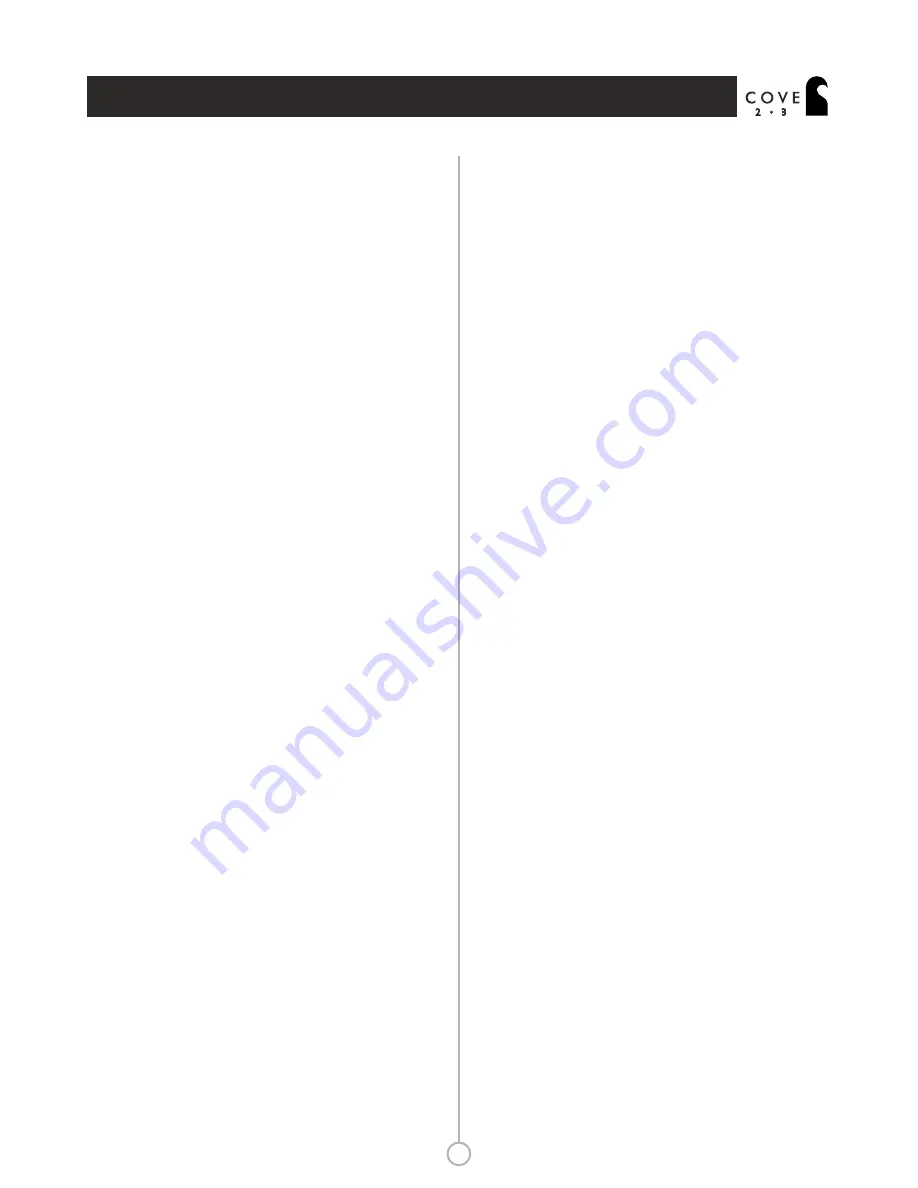
®
OPERATING INSTRUCTIONS
a) Open doors and windows to ventilate the room.
b) Let the fire out and safely dispose of the fuel from the
appliance.
c) Check for flue or chimney blockage, and clean if required.
d) Do not attempt to re-light the fire until cause of fume has been
identified. If necessary, seek professional advice.
The most common cause of fume emission is flueway or chimney
blockage. For your own safety these must be kept clean.
Fire blazing out of control
Check that :
a) The door is tightly closed.
b) The air control is pushed in.
c) A suitable fuel is being used.
d) Door seals and air control flap pads are intact.
Chimney Fires
If the chimney is thoroughly and regularly swept, chimney fires
should not occur. However, if a chimney fire does occur push the air
control in fully and tightly close the door of the appliance. This
should cause the chimney fire to go out in which case the control
should be kept closed until the stove has gone out. The chimney and
flueways should then be cleaned. If the chimney fire does not go out
when the above action is taken then the fire brigade should be called
immediately.
After a chimney fire the chimney should be carefully examined for
any damage. Expert advice should be sought if necessary.
CO ALARM
Your installer should have fitted a CO alarm in the same room as the
appliance. If the alarm sounds unexpectedly, follow the instructions
given under “Warning Note” above.
IF YOU NEED FURTHER HELP
If you need further help with your Charnwood Cove then your
Installer will be able to provide the answers to most questions. Your
Local Charnwood Premier Dealer has a great deal of experience and
will also be able to provide helpful advice. Further help is available
from the Charnwood Customer Services department who will be
pleased to give advice, if necessary.
CAA AND SMOKE CONTROL
The Clean Air Act 1993 and Smoke Control Areas
Under the Clean Air Act local authorities may declare the whole or
8
charnwood
part of the district of the authority to be a smoke control area. It is
an offence to emit smoke from a chimney of a building, from a
furnace or from any fixed boiler if located in a designated smoke
control area. It is also an offence to acquire an "unauthorised fuel"
for use within a smoke control area unless it is used in an "exempt"
appliance ("exempted" from the controls which generally apply in
the smoke control area).
In England appliances are exempted by publication on a list by the
Secretary of State in accordance with changes made to sections 20
and 21 of the Clean Air Act 1993 by section 15 of the Deregulation
Act 2015. Similarly in Scotland appliances are exempted
bypublication on a list by Scottish Ministers under section 50 of the
Regulatory Reform (Scotland) Act 2014.
In Northern Ireland appliances are exempted by publication on a list
by the Department of Agriculture, Environment and Rural Affairs
under Section 16 of the Environmental Better regulation Act
(Northern Ireland) 2016.
In Wales appliances are exempted by regulations made by Welsh
Ministers.
Further information on the requirements of the Clean Air Act can be
found here: https://www.gov.uk/smoke-control-area-rules
Your local authority is responsible for implementing the Clean Air
Act 1993 including designation and supervision of smoke control
areas and you can contact them for details of Clean Air Act
requirements.
The Cove 2 blu has been recommended as suitable for use in smoke
control areas when burning wood logs.
The Cove 2 model includes factory-fitted modifications to the air
controls which have been designed to meet Clean Air Act
requirements for smoke control Exemption.





































